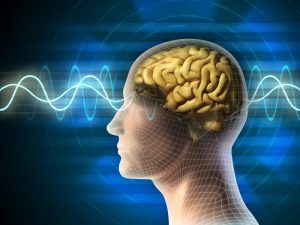 A poker player must understand well how both their conscious and subconscious mind work. The subconscious still carries a bad reputation, gathered from intellectual history. Freud's discoveries are almost impossible to ignore. Thanks to him, the term “subconscious” became associated with concepts such as repression, hidden motives, passion for family members, fear of castration, and many other pseudoscientific sensations. Although modern psychology has rejected many of Freud's proclaimed discoveries as scientifically dubious, the definition of the subconscious mind he proposed is still very real and relevant, albeit in a different way than he imagined.
A poker player must understand well how both their conscious and subconscious mind work. The subconscious still carries a bad reputation, gathered from intellectual history. Freud's discoveries are almost impossible to ignore. Thanks to him, the term “subconscious” became associated with concepts such as repression, hidden motives, passion for family members, fear of castration, and many other pseudoscientific sensations. Although modern psychology has rejected many of Freud's proclaimed discoveries as scientifically dubious, the definition of the subconscious mind he proposed is still very real and relevant, albeit in a different way than he imagined.
We all know well that defining consciousness is difficult, but that doesn't mean we should get lost in the labyrinths of language and philosophy. Simply put, consciousness is the part of the mind that you consciously understand and can directly control. The subconscious is the part of the mind that you are mostly unaware of and cannot directly control. It governs your automatic processes, actions, and thoughts.
Most people completely misunderstand how their mind works. In fact, this might be a good thing, as the details of cognition do not affect their daily lives. But as a poker player, your mind is the main interface between you and the game. Your mind is also the main obstacle to progress. It is very important to come to terms with its peculiarities and weaknesses and to understand them more deeply.
The first important statement about the mind: it is not continuous. It is incomparable, composed of different parts, distributed not only in space but also in certain patterns. Consciousness and its constructs make up only one element among many others in the mind.
There are many classic psychological experiments demonstrating the fragmentation of the mind.  For example, at one time, separating the corpus callosum, the bridge between the two hemispheres of the brain, was used to treat severe epilepsy (in rare cases, this is still done). When scientists observed the surviving subjects, they revealed very dramatic changes. When these “split-brain” patients were shown a picture only to the left eye, the patient could not say what was being shown because the image seen by the left eye is processed in the right hemisphere of the brain, while the speech control center is in the left hemisphere. The separation of the corpus callosum cut off the connection between the two hemispheres, so patients could only recognize but not name what they saw. When asked to pick up and manipulate an object, the subjects could easily do so. They held the object perfectly, but if it was in the left visual field, they could not name it. If the object was in the right field, controlled by the left hemisphere, they could name it perfectly.
For example, at one time, separating the corpus callosum, the bridge between the two hemispheres of the brain, was used to treat severe epilepsy (in rare cases, this is still done). When scientists observed the surviving subjects, they revealed very dramatic changes. When these “split-brain” patients were shown a picture only to the left eye, the patient could not say what was being shown because the image seen by the left eye is processed in the right hemisphere of the brain, while the speech control center is in the left hemisphere. The separation of the corpus callosum cut off the connection between the two hemispheres, so patients could only recognize but not name what they saw. When asked to pick up and manipulate an object, the subjects could easily do so. They held the object perfectly, but if it was in the left visual field, they could not name it. If the object was in the right field, controlled by the left hemisphere, they could name it perfectly.
Another example is blindsight. Blindsight is a rare neurological disorder caused by damage to the visual cortex. Individuals with blindsight believe they are blind. They claim to have no conscious visual experience. However, when an object is shown in their visual field and they are asked to guess the location or direction of movement, although they insist they cannot see, they point in the correct direction with incredible accuracy. This is a remarkable discovery. It suggests that the connection between their consciousness and the visual apparatus is severed, but their subconscious still processes and receives visual information. Patients with this disorder can also freely grasp and manipulate objects they claim not to see.
This is just the tip of the iceberg. Although most experiments on the human brain are impossible (it would be unethical), a lot of information about the architecture of the mind has been gathered through accidental experiments. Over many years of observations and experiments, we have records of almost all possible brain injuries. Scientists, seeing how damage to one part of the brain affects a patient's behavior, have discovered many insights into brain functioning and modality.
For example, aphasia – damage to speech. Broca's aphasia is a condition where the subject understands the meaning of individual words but cannot form and comprehend sentences well. This arises from very specific brain module damage. There is also Wernicke's aphasia, where the patient can speak perfectly but completely does not understand what others are saying or writing. These disorders show how narrowly certain brain areas can be specialized, even in such complex things as language.
The more we learn about the brain, the more we realize how fragmented it is.
Evolutionary biology sheds even more light on this, showing how our brains evolved from reptilian and neo-mammalian to the current human state. The neo-cortex, where our consciousness, cognition, and rationality “sit,” is the newest addition to brain structure. But most of our movements, behaviors, and other functions are regulated by older, unconscious mind structures. Consciousness is a newcomer. For mammals from which humans evolved, consciousness might have been just a byproduct, playing a small role in their brain processes, unlike us, Homo sapiens.
So, what is consciousness? Consciousness is a newly emerged ability in our mammalian brains. Located in our neo-cortex, it constantly synthesizes our sensory perceptions, emotions, memory, and cognition into a continuous experience. This is what consciousness is.
And of course, consciousness is an effective carrier of light signals from the external world. But why should you conclude that it can also play such an important role in your inner world? Why should we conclude that consciousness is designed to understand the vast waters of the subconscious in our mind? In fact, the small part of the mind that remains outside the subconscious is filtered through its own concepts and frameworks by consciousness. From an evolutionary perspective, nothing more is needed. While consciousness tries to process its part, the rest of the brain is engaged in complex neuronal activity that helps sustain life and other functions.
Another important statement about the mind: consciousness does not have access to all parts of the mind. And this is not because you made some mistake. This is just how our brains are designed.
We feel that our conscious self must be who we are. Our conscious experiences are primarily “discussed” in our neo-cortex. And our mind is composed of many more elements than just the conscious part. And in this way, looking more broadly, we are much more than our consciousness.





